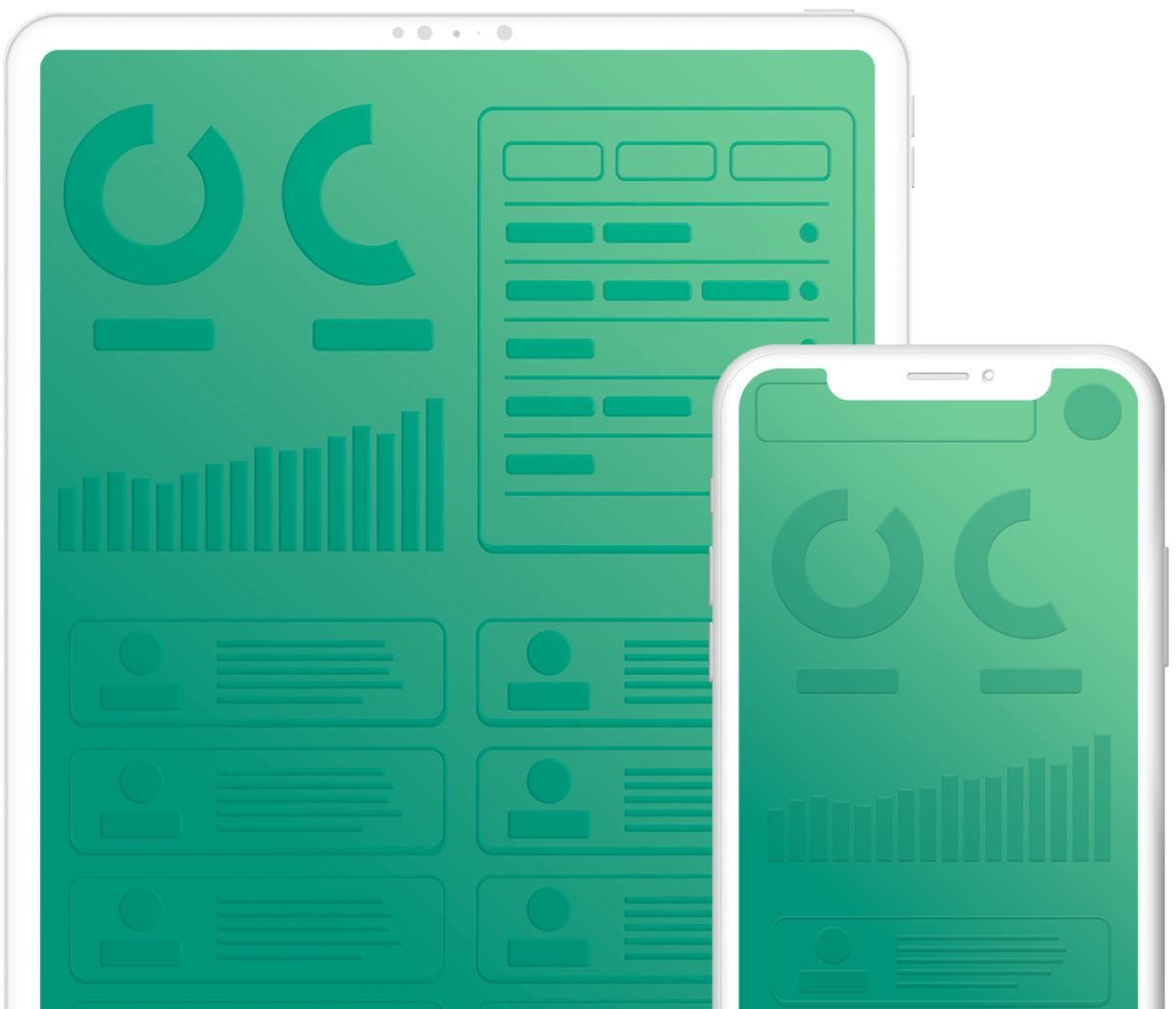Understanding asset management
Asset management involves keeping track of all your company’s assets and making sure they are utilized efficiently. It includes managing physical assets like equipment, machinery, and digital assets like software licenses and intellectual property. With effective asset management, you can monitor the lifecycle of your assets, from procurement to disposal. Key benefits include reducing costs, improving productivity, and ensuring compliance with regulations. Proper asset management is crucial for companies of all sizes to streamline operations and maximize their investments.
Importance of compliance software in asset management
Compliance software plays a crucial role in asset management by ensuring that businesses adhere to regulations and industry standards no matter your industry. Whether you’re in the midstream, downstream, renewables, or shipbuilding industry, with compliance software, companies can track and monitor their assets more effectively, reducing the risk of non-compliance penalties. This software helps organizations maintain accurate records, perform audits efficiently, and generate reports to demonstrate compliance. By using compliance software, businesses can streamline their asset management processes, leading to increased efficiency and reduced overall risk in their operations.

Key features of compliance software
Compliance software includes features such as reporting tools to generate compliance reports quickly and document management capabilities to organize and store important regulatory documents. Audit trails keep a record of all compliance activities. Integration options allow the software to work seamlessly with other systems, enhancing efficiency.
How compliance software streamlines asset management
Compliance software is essential for asset management as it helps organizations follow regulations effectively. It enables companies to automate compliance tasks, track changes in regulations, and maintain accurate records for audits. With compliance software, businesses can streamline their asset management processes, helping to ensure they meet legal requirements and avoid penalties.
Implementing compliance software in your organization
By implementing compliance software in your organization, you can streamline and automate processes related to regulatory requirements. This software helps you ensure that your organization is meeting all necessary compliance standards and regulations effortlessly. Features of compliance software may include automated data collection, real-time monitoring, reporting functionalities, and compliance tracking. It aids in organizing and managing various compliance activities efficiently.
Monitoring and reporting with compliance software
Compliance software helps you monitor and report on your assets to ensure they meet regulatory requirements. With compliance software, you can track asset status, generate reports, and maintain a record of compliance activities easily. Key benefits of using compliance software include:
- Ensuring your assets adhere to regulations
- Streamlining reporting processes
- Enhancing visibility into your asset management practices
By utilizing compliance software, you can improve your organization’s compliance efforts and streamline monitoring and reporting tasks efficiently.
Ensuring data security and privacy
With compliance software, you can keep your data secure and private. It helps you meet regulations and protect sensitive information. Here’s how it ensures data security and privacy:
- Encrypts Data: Compliance software uses encryption to secure your data from unauthorized access.
- Access Control: It allows you to control who can view and modify sensitive information.
- Regular Updates: Software updates help fix security vulnerabilities and keep your data safe.
- Monitoring and Auditing: Compliance tools monitor activities and provide audit trails for data access.
Achieving compliance goals through software solutions
Compliance software solutions can help organizations meet their compliance goals more efficiently. By using software, companies can automate processes, track regulatory changes, and ensure that they are meeting industry standards. This technology enables businesses to stay up-to-date with requirements, reduce human error, and streamline compliance tasks. Key benefits of compliance software solutions include:
- Centralized data management for easier monitoring
- Customizable reporting features for tracking progress
- Integration with existing systems for seamless workflow
- Real-time reporting
How TRU can help
In today’s fast-paced business environment, effective asset management and compliance are more critical than ever. TRU Solutions understands these challenges and offers a cutting-edge software solution that digitalizes your data, providing valuable insights and ensuring compliance with industry standards.
TRU’s asset management software is designed to streamline your operations and optimize asset utilization while keeping your people safe. By digitalizing your data, the software enables you to track and monitor your assets in real time, making informed decisions based on accurate and up-to-date information. From physical assets like equipment and machinery to pipes and valves, TRU has you covered. And like our sister company, Jones Logistics, we’re proud to deliver a solution that gives you peace of mind.
One of the key features of TRU’s software is its ability to help ensure compliance with industry regulations. It also provides reporting tools to generate compliance reports quickly, saving you time and effort. With TRU Solutions, you’ll have the tools and resources to help your organization meet the necessary compliance standards for audits, such as PHMSA and OSHA. Our comprehensive solutions are designed to support your compliance efforts and minimize the risk of potential penalties. By partnering with TRU, you’ll be better equipped to navigate the complex landscape of regulations and ensure your business is well-prepared for any compliance challenges that may arise.
Implementing TRU Solutions’ asset management software is a straightforward process. The company offers comprehensive training and onboarding to ensure that your team is well-versed in using the software effectively. The software can also integrate seamlessly with your existing systems, enhancing efficiency and minimizing disruption to your current workflows.
By choosing TRU, you’re not only digitalizing your asset management processes but also gaining a partner committed to your success. TRU’s expert team is dedicated to providing ongoing support and guidance, ensuring that you maximize the benefits of the software solution.
Take control of your asset management and compliance with TRU Solutions. Visit trusolutions.com to learn more about how their innovative software can transform your business operations and help you achieve your goals.
At TRU Solutions, we know security is critical to our customers. We handle sensitive data and want to ensure we’ve taken every precaution to keep it protected. That’s why we’re thrilled to announce that TRU recently attained a CMMC 2.0 Level 2 Readiness per an extensive evaluation by Point Solutions Group!
So What Exactly is CMMC?
CMMC stands for Cybersecurity Maturity Model Certification and is a framework that assesses and improves the cybersecurity of companies that work with the U.S. Department of Defense (DoD) and other organizations with highly sensitive unclassified information. It is designed to enforce the protection of sensitive information that is shared with contractors and subcontractors.
What Was The Process?
Achieving CMMC 2.0 Level 2 Readiness means TRU demonstrated the stringent controls required to reach this level of cybersecurity. An independent assessor, Point Solutions Group, reviewed our policies, processes, systems and more over several months. We had to show evidence of meeting 110 security requirements outlined in the NIST (National Institute of Standards and Technology) 800-171 framework (which CMMC 2.0 Level 2 standards are based on). This included technical controls like encryption, access limitations and intrusion monitoring. We also proved solid cybersecurity practices across our organization with training, auditing, and incident response plans through our Technology Control Plan (TCP).
What does this mean for tru?
Earning CMMC 2.0 Level 2 readiness certifies that TRU utilizes protections aligned with safeguarding sensitive government information – up to Controlled Unclassified Information (CUI). These are stringent requirements for best practices and show that TRU is proactively positioning itself as a leader in cybersecurity.
TRU knows how much our clients value security. We take pride in attaining this credential, further validating our commitment to guarding your data. CMMC 2.0 Level 2 Readiness demonstrates we utilize robust measures to keep your data safe. We’ll continue reinforcing our defenses – because at TRU, security is never “good enough.” It’s an endless journey we’re dedicated to pursuing.
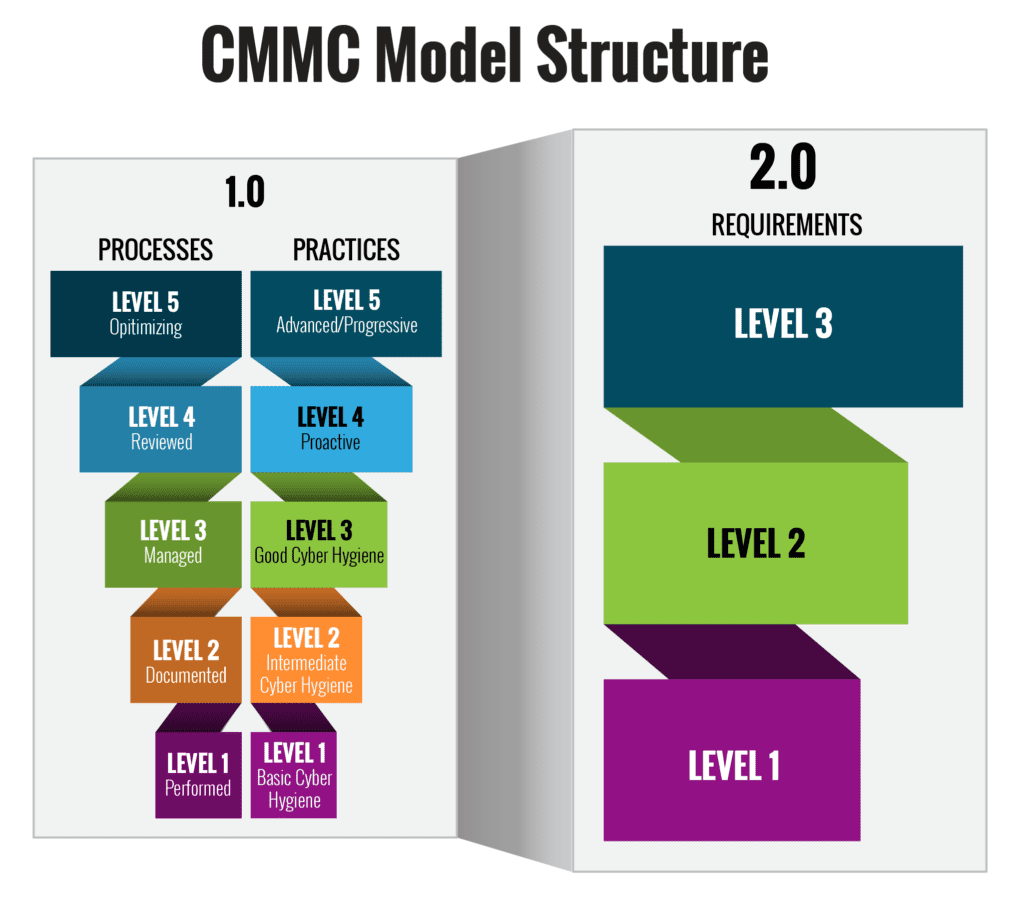
A recent project explored bringing paperless technology to weld reporting in Navy shipyards. The goal was to optimize records by creating digital versions that align with naval specifications. EWI and software developer TRU teamed up to tackle this challenge.
After lots of discovery and feedback from participating shipyards (Fincantieri Marinette Marine, a new build yard, and Vigor, a repair yard), TRU Solutions digitized their paper reports and made them available on iPad and Web platforms, streamlining weld records. Based on the shipyards’ input, they also refined several reports including those for Non-Destructive Testing, Visual Inspections, and First Pass Yield. The system consolidated paperwork and automated workflows, produced reports meeting naval criteria, and allowed data sharing through summaries.
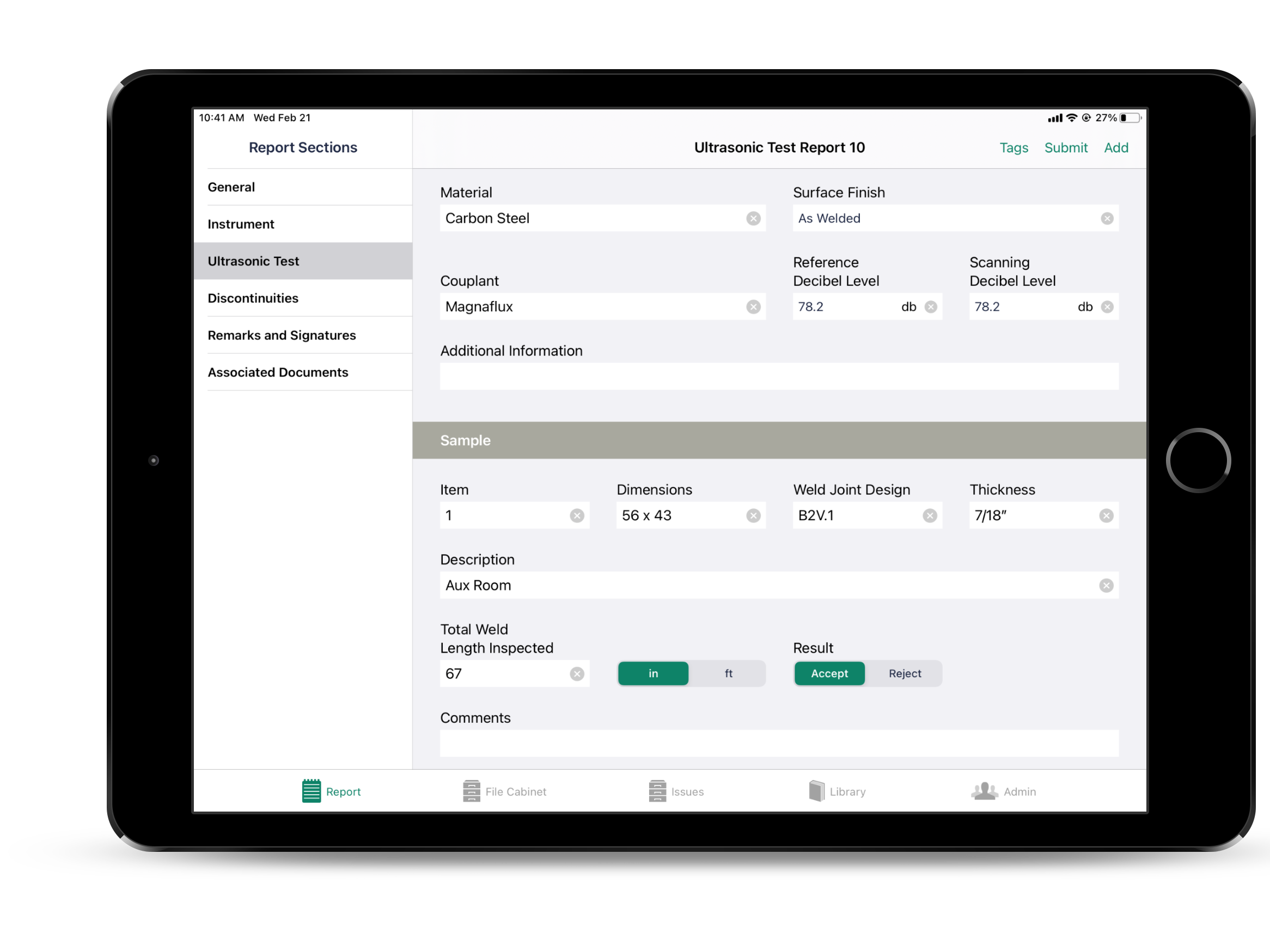
Benefits of the digital approach include:
- Increased transparency of inspection to the welding process
- Improved efficiency of weld requirement validation and deployment efforts
- Automated weld requirement and record data available to decision-makers for assessment in Business Intelligence Tools and to refine process
- Archived weld requirements and record data for future use
- Reduced daily costs and save engineers and inspectors time
Through workshops with shipbuilders, the team mapped out current workflows and requirements. TRU then developed features like auto-population from dropdowns to simplify data entry. Data is captured in the online app, but if the connection is interrupted, the app still works offline and syncs when online again. Records can be exported to PDF for Objective Quality Evidence (OQE).
Testing at shipyards provided valuable feedback for refinements. Users saw big potential in reducing steps and errors. The instant availability of data was a major perk. Builders estimated 10-15 minutes saved per report on-site. Even bigger time savings were expected from eliminating post-inspection data entry.
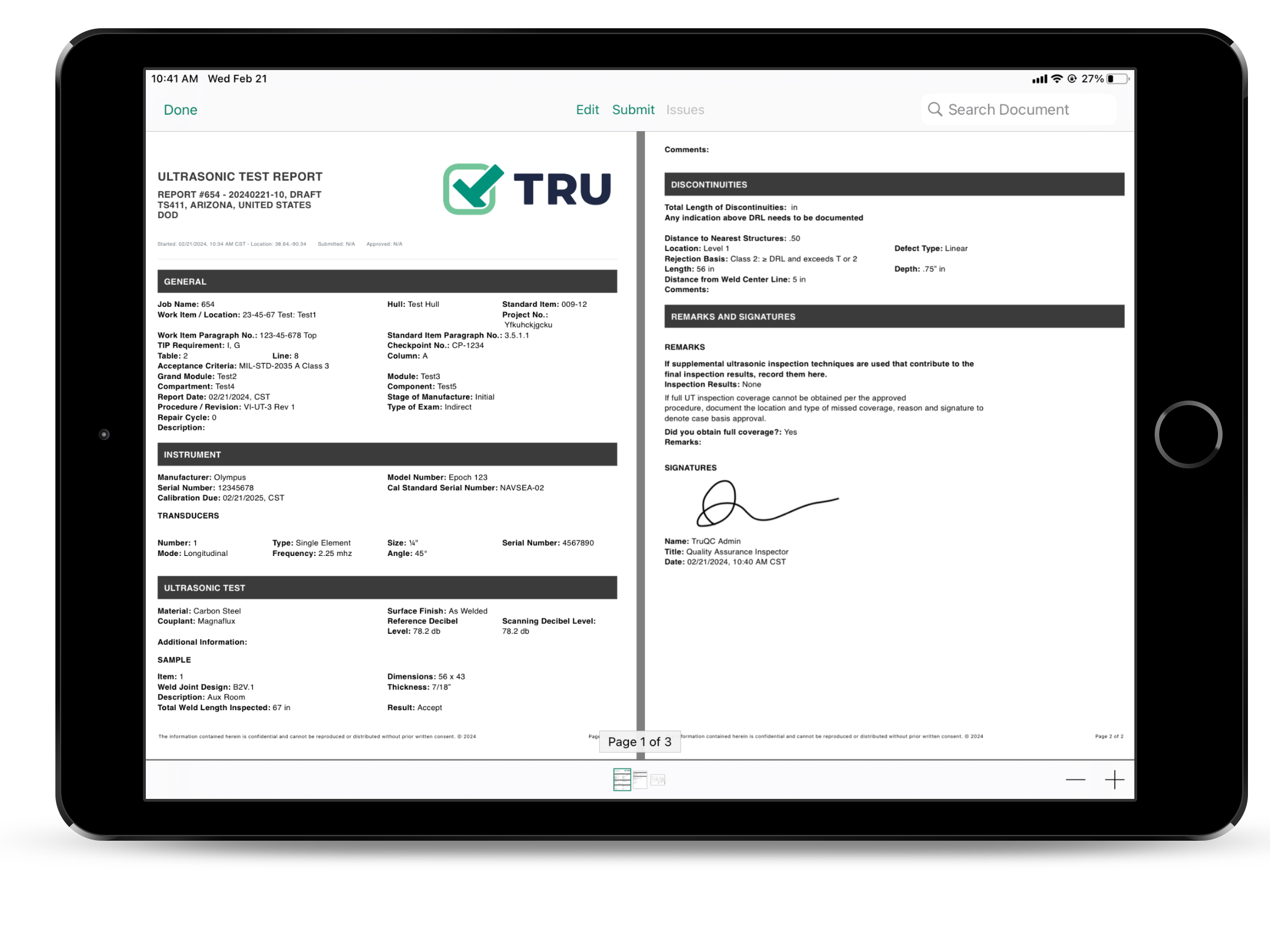
The streamlined approach looked to provide ROI through:
- Faster report creation
- Less rework and fewer defects
- Easy access to records during audits
The project concluded digital weld records enhance efficiency and transparency. To fully realize the benefits, continued coordination with shipbuilders will be key and we’re confident that digital, optimized weld records hold great potential in modernizing paper-based systems!
Results from NSRP:
At the National Shipbuilding Research Program (NSRP), quantified time savings included 15 minutes per individual inspection, equivalent to 7.5 saved hours daily for the inspection process. The streamlined sign-off procedures saved 25 minutes per instance, while each rework inspection took 10-20 minutes less time.
Client Testimonial:
“Maximizing inspection time and minimizing desk time was the ultimate goal for our participation in this project. Now we have been able to give our inspection teams the ability to create reports through the Weld software instead of spending additional time at the end of a shift creating reports and this has proven to be very efficient beyond initial expectations. Also, having the ability to automate the collection of our First Pass Yield data and provide detailed reports to our Executive Team has been a tremendous bonus, and the creativity of the TRU team is greatly appreciated in making this function a reality”.
– Lindsay Docherty, Director of Quality at Vigor Marine
At TRU Solutions, our field technicians are the boots on the ground that help make our operations run smoothly each and every day. They work hard to ensure projects stay on track, clients are satisfied, and data is accurately captured. To show our appreciation for these team members, we’re highlighting a few of them and the great work they do.
Meet Caleb, Mark, and Amy – dedicated TRU field techs with unique experiences and skills.

Caleb Comer brings a positive attitude and people skills to each job site. He’s eager to learn from the seasoned inspection crews, seeing each new term or process as a chance to expand his knowledge. He says the TRU support team also helps him overcome any obstacles he faces. Caleb takes pride in his work ensuring data accuracy for clients and his positive attitude helps unify teams.
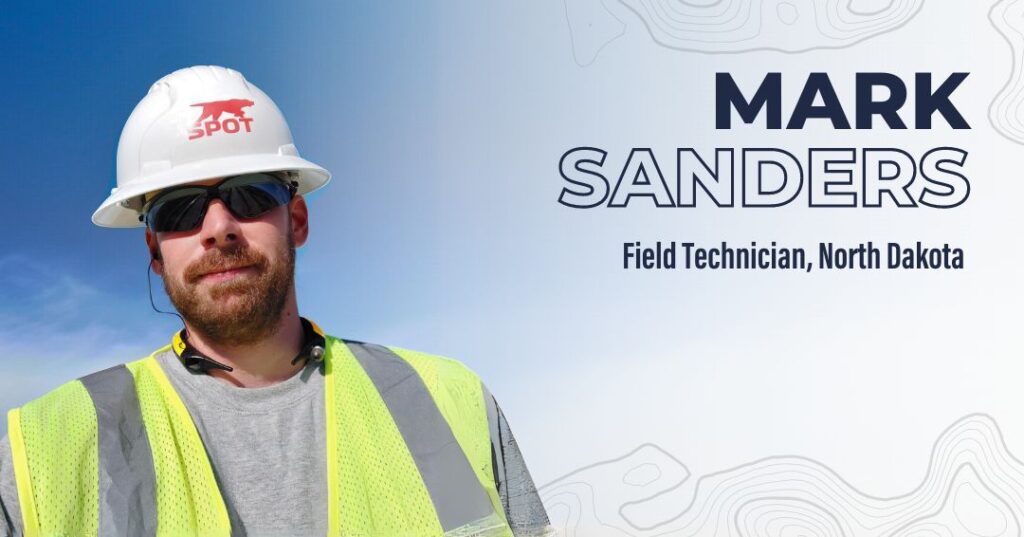
Mark Sanders builds trust with clients by tapping into his customer service abilities to supply his know-how whenever any issues arise. He also has a specialized focus on weld mapping and traceability. Mark credits team members like James Bugg, Robert Thomas, Kameron Williams, and Troy Gyuran with lending guidance and assistance whenever needed. He values TRU’s ability to capture huge amounts of traceable data and works tirelessly to improve the product and its offerings.
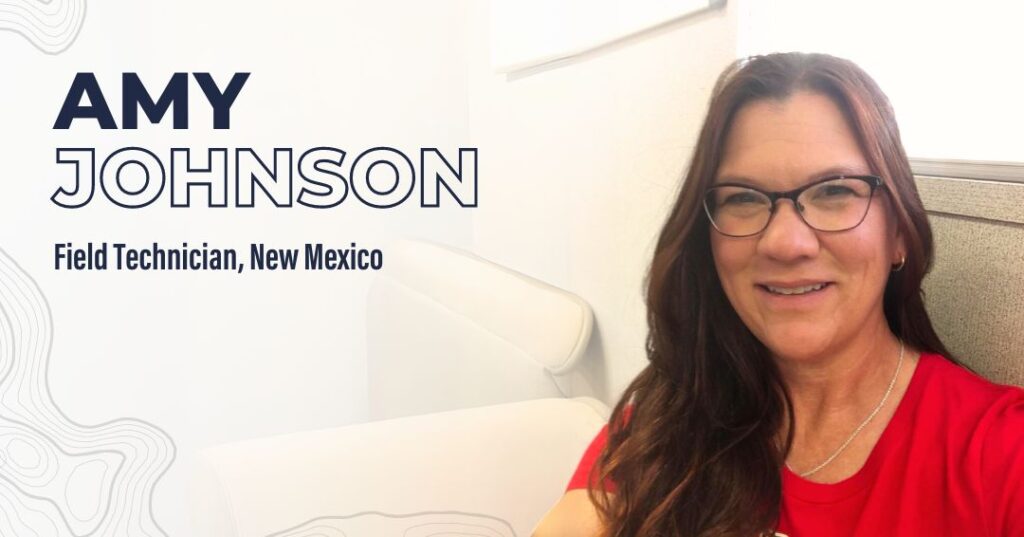
Amy Johnson recently celebrated 6 years with TRU, and we are tremendously grateful to have her as part of our crew. She highlights meeting people, learning new systems, and instructing others as rewarding parts of the job. Amy carefully captures every detail and enjoys providing clients with quality data. She says Troy Gyuran sets a stellar example for all through his hard work and mentorship. When asked to share an example of overcoming a client challenge, Amy recalled the time she was faced with an internet slowdown. She persevered by upgrading connectivity that resolved the situation, exemplifying her commitment to overcoming obstacles to deliver for our customers.
At TRU Solutions, we want to thank Caleb, Mark, Amy, and all of our field technicians. Their hard work, expertise, and dedication help our entire operation succeed. We couldn’t do it without them!
In defense contracting, ensuring the quality and integrity of every component is necessary to get ships out of dry dock quickly and combat ready while ensuring naval compliance. The United States Navy’s Naval Sea Systems Command (NAVSEA) has established stringent standards for quality assurance, and compliance with these standards is non-negotiable. One such standard, Standard Item 009-32, is a crucial component of NAVSEA’s quality assurance framework. To meet the exacting requirements of NAVSEA, TRU Solutions has developed a game-changing software solution for assured naval compliance. In fact, TRU is the only off-the-shelf software technically acceptable for NAVSEA Objective Quality Evidence (OQE) for Standard Item 009-32.
Understanding Standard Item 009-32
Before delving into TRU’s innovative software features, let’s briefly outline Standard Item 009-32. This standard mandates the inspection and verification of critical components used in naval systems. It categorizes inspections into four types:
(V) – Verification by Tradesperson or Trade Supervisor
(I) – Independent Inspection
(Q) – Technical Representative Inspection
(G) – Government Observation
Each category has specific requirements for verification and documentation, and any lapses can lead to costly delays and compliance issues.

TRU’s Digital OQE with 009-32 Report for Naval Compliance
TRU’s software simplifies the complex task of adhering to Standard Item 009-32 by offering a comprehensive set of features that streamline the inspection and reporting process:
Auto-Flagging Out-of-Spec Conditions
TRU’s software employs intelligent algorithms to automatically flag components that do not meet specified standards. This feature significantly reduces the risk of non-compliant components slipping through the cracks.
Efficient Signature and Issue Management
TRU streamlines the process of identifying missing signatures in lengthy reports. It provides a summary that pinpoints the pages lacking signatures, eliminating the need for manual search. Additionally, the software offers an issue summary feature, enabling quick categorization of issues by severity for improved prioritization and efficiency in compliance management.
Remote Review and Signing of Reports
With TRU, authorized personnel can review and electronically sign reports remotely. This capability enhances efficiency and expedites the approval process, even in distributed work environments.
Permission-Based Access
The software offers granular permission settings, allowing organizations to restrict access to sensitive information. This ensures that only qualified personnel have access to critical data.
NAVSEA Technically Acceptable Designation
TRU’s software is officially recognized as the only off-the-shelf solution that meets the rigorous NAVSEA OQE requirements for Standard Item 009-32. This designation underscores its reliability and suitability for defense contracts.
Specification Import Capability
The software allows for the easy import of NAVSEA specifications, reducing the time and effort required for data entry and ensuring accuracy.
Customer-Facing API for System Integration
TRU offers a customer-facing API for seamless integration with existing systems, enhancing compatibility and workflow efficiency.
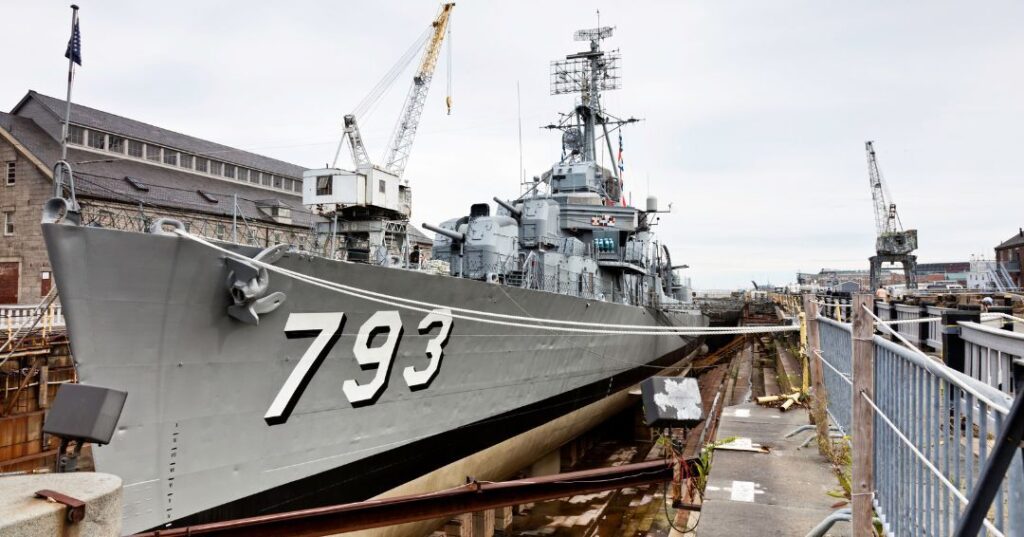
In the world of defense contracting, precision, compliance, and efficiency are non-negotiable. TRU’s off-the-shelf software is a game-changer for organizations seeking to meet NAVSEA Objective Quality Evidence requirements for Standard Item 009-32. Its innovative features, such as auto flagging of out-of-spec conditions, remote report review, and permission-based access, not only simplify compliance but also enhance the quality assurance process. The software’s NAVSEA Technically Acceptable designation is a testament to its reliability and suitability for defense contracts.
For organizations committed to maintaining the highest standards of quality assurance in naval systems, TRU is the only choice that combines ease of use with uncompromising compliance. Invest in TRU today and experience a new era of efficiency and precision in NAVSEA Objective Quality Evidence reporting.
Want to know how TRU can help your business stay compliant while making data collection a breeze? Let’s talk.

You probably use SaaS applications on a daily basis. Dropbox provides online cloud storage services as a SaaS application. Adobe Creative Cloud offers illustration, design, and photo editing tools as a SaaS provider. Slack serves as a SaaS application for business collaboration and communication.
SaaS applications offer off-the-shelf software solutions designed for rapid implementation with minimal customization. They embody flexibility and ease of adoption, with affordability stemming from the pay-per-user access model rather than the purchase of a license for the application itself.
However, despite their many advantages, SaaS applications have limitations. SaaS applications are one-size-fits-all, download-and-done solutions, meaning there’s little room for customization for one specific account. Plus, most SaaS subscriptions offer minimal support and training to help organizations adopt the software.
While straightforward SaaS applications may suffice for certain business functions, such as payroll software for a small company, critical business processes like compliance reporting require more customized solutions.
This is where managed software as a service (MSaaS) applications come into play.
In this article, we will clarify the difference between SaaS and MSaaS, provide definitions for both terms, and highlight their key distinctions. We will then elaborate on why we developed TRU (formerly TruQC) as an MSaaS application and what it means for your organization.
Managed software as a service (MSaaS): More customization, more support, more training
The ‘M’ in MSaaS could just as easily signify ‘more’ – more customization, more support, more training, and more value. MSaaS applications bridge the gap between simple, off-the-shelf SaaS applications and fully customized software solutions.
Both SaaS and MSaaS applications offer a standard software solution for about 80% of what a business may require. However, MSaaS service providers go the extra mile by configuring their core software or creating new features to provide you with a tailored solution that meets 100% of your business needs.
MSaaS applications deliver the flexibility and cost-efficiency of SaaS while ensuring the level of configurability required to achieve a customized solution for your business. You can promptly download the core software and features of MSaaS applications, but you’ll achieve optimal results when customizing the app for each account. MSaaS customers typically own a software license, and their subscription includes continuous support, upgrades, and training to help them maximize the application’s benefits.
SaaS vs. MSaaS applications
Pure software as a service (SaaS)
SaaS applications companies design off-the-shelf applications for swift implementation with no customization. SaaS customers purchase a subscription that grants them remote access to the software.
Managed software as a service (MSaaS)
Applications that users can download immediately, but MSaaS providers configure them individually for each account. MSaaS customers typically own a license to the software and their subscription covers ongoing support, upgrades and training.
Key differences
Level of support
SAAS
No ongoing support, or finite ongoing support (i.e., 20 hours a year). More support may come at an additional cost.
MSAAS
Greater support, training and account service for subscribers. Project managers and the development team can be looped in for more substantial needs and requests (i.e., custom-building features).
Speed of implementation
SAAS
SaaS applications are designed to be used immediately upon download / subscription.
MSAAS
While MSaaS can often be used immediately upon download, they’re meant to be configured to each account prior to implementation to offer seamless adoption and maximum value.
Relative cost of solution
SAAS
SaaS subscriptions tend to be cheaper, though they typically exclude services such as unlimited support, training, upgrades and app management. SaaS solutions do not evolve alongside your business.
MSAAS
MSaaS subscriptions are generally more expensive when you account for the initial configuration and implementation services, as well as ongoing support, training and upgrade services.
Ability to configure the application
SAAS
SaaS applications are standardized software solutions, meaning they can be downloaded and implemented as-is but offer little room for configuration to a specific client’s needs.
MSAAS
MSaaS applications offer a core software solution, which can be configured to a specific client’s needs. The MSaaS provider can also build custom features to be pushed live to only that account.
Subscription type
SAAS
SaaS typically have user-by-user subscriptions, offering access to the software from an internet-connected device. The number of users can be scaled up or down as needs change.
MSAAS
MSaaS subscriptions hybrid model between the traditional license model and the SaaS subscription model. MSaaS customers pay for a license for each user, but have a subscription for ongoing support, training and account management. The number of users can be scaled up or down as needed.
TRU: An MSaaS application for paperless reporting
TRU, the premiere paperless reporting application, provides all the tools and ongoing support to ensure quality, safety and compliance. Out-of-the-box, most of your reporting needs will be met with TRU, but we are much more than a SaaS application.
We take a more hands-on, consultative approach to ensure TRU works exactly as you need it. Our development and support teams configure TRU to your proven processes — transforming them into simple, secure workflows. As you use the app, you’re allowed unlimited access to our support agents and training videos.
Essentially, TRU is an MSaaS application for paperless reporting. TRU configures your workflows while offering access to all the ongoing help and support needed for a successful implementation.
Configure TRU to your workflows and reporting needs
Although TRU comes equipped with default reports and features, we tailor our application to each individual client’s workflows and reporting needs. Whether that’s simply building all the compliance, safety and quality reports a client needs or building a new feature from the ground up, there are few configurations we won’t tackle.
Here are some features we custom-built for our clients:
- Uploading and attaching as many photos as needed to a report
When Spartan Race wanted to upload multiple photos from their camera roll at a time into their TRU reports, our development team listened. Since this was a request could be widely used by our other clients, we developed it and pushed it out to all users at no additional cost — not even to Spartan Race. Learn more. - Developing and rolling out our issue tracking feature
A major oil and gas company wanted to better track and collect issue data across projects. We listened, strategized a solution and developed our issue tracking feature for them. Issue tracking allows you to record detailed descriptions and defects found in the field, track them to resolution and run data summaries to establish trends and minimize future risk. This feature is now available to all TRU clients — learn more about it here. - Device integrations
Elcometer and PosiTector integrations serve our industrial paintings clients. Surface profile, environmental conditions, gloss, surface cleanliness and dry / wet film thicknesses readings immediately record in TRU, rather than manually typing each gauge reading.
Quick configuration, free training and unlimited support for all TRU clients
For accounts that require minimal report changes, we can set up an account and train them as soon as the following day. When organizations require additional reports or account modifications, the turnaround time is typically two to three weeks. For rollouts of entirely new features and configurations —often necessary for enterprise-wide adoption— a couple months may be required for custom development.
All TRU clients have access to unlimited support via phone, live chat or email long after the initial training. We have also created alternative support methods such as our training video library and User Guide to make receiving the support you need as quick and easy as possible.
To see real-world examples of our consultative, support-driven approach to paperless reporting, check out some of our case studies. Our current clients’ stories speak for themselves, with results such as a 50% reduction in inspection time, 900 hours of time saved and 390% ROI after implementing TRU. Or, if you’d like to learn more about TRU, feel free to request a consultation with our team today.
In the world of naval shipbuilding and repair, efficiency and accuracy are paramount. Any delays or errors can lead to costly rework, extended dry dock stays, and decreased operational readiness, ultimately affecting the efficient allocation of taxpayer dollars. This is where TRU comes into play, revolutionizing how the Navy and contractors handle the production of accepted Objective Quality Evidence (OQE) in compliance with Standard Item 009-32 and 009-12. TRU is more than just software; it’s a game-changer that streamlines processes, reduces costs, and ensures ships get back in the water faster by reducing dry dock time.

Reducing Dry Dock Time
Reducing the time ships spend in dry dock is a top priority for both the Navy and contractors. TRU accelerates the OQE generation process, which in turn minimizes the duration a ship has to stay out of commission. This efficiency saves both time and money, increasing the overall operational readiness of the fleet.
Eliminating Rework and Staying on Schedule
One of the most significant advantages of TRU is its ability to eliminate rework. By providing a robust digital solution that ensures compliance with NAVSEA’s stringent standards, TRU minimizes errors and discrepancies. This translates to fewer costly revisions and modifications, keeping ship repair and construction projects on schedule.
Maximizing Efficiency and Compliance
TRU’s efficiency doesn’t stop at eliminating rework and reducing dry dock time. It also maximizes efficiency by automating compliance processes. With TRU, data capture and reporting become standardized and automated, ensuring that every aspect of the project complies with specifications. This level of consistency is a game-changer in an industry where precision is critical.
Manage By Exception to Minimize Dry Dock Time
TRU goes beyond mere automation; it incorporates the principle of ‘manage by exception’ to enhance efficiency further. This means that while it automates routine tasks and compliance checks, it also focuses attention on areas that require human intervention. By flagging out-of-spec readings and deviations automatically, TRU ensures that project managers and teams can concentrate their efforts where they are most needed. This approach not only reduces the risk of errors going unnoticed but also empowers decision-makers to make informed choices promptly, ultimately leading to smoother naval operations and more effective resource allocation.
Automating Compliance and Flagging Out-of-Spec Readings
TRU takes automation to the next level by not only helping contractors comply with specifications but also flagging any out-of-spec readings automatically. This proactive approach ensures that potential issues are addressed immediately, preventing costly deviations from the project’s scope.
Integration with Legacy Systems
TRU isn’t just a standalone solution; it can seamlessly integrate with legacy systems. This compatibility ensures that the transition to TRU is smooth and that existing data and processes are leveraged, rather than disrupted.
Customer-Facing and Ready-to-Use APIs
TRU provides customer-facing APIs, making it easy for Navy personnel and contractors to access the system’s data and functionality. This user-friendly interface enhances collaboration and transparency, enabling stakeholders to stay informed and engaged throughout the project’s lifecycle.
Security with AWS GovCloud
Security is a top priority for the Navy, and TRU has that covered. By hosting the platform on AWS GovCloud, TRU ensures that all data and processes are protected by the highest level of security measures, meeting stringent government standards and regulations.
Ease of Use and Maintenance for Minimal Time in Dry Dock
TRU is designed for ease of use and maintenance. It simplifies complex processes, allowing Navy personnel and contractors to focus on their core tasks rather than wrestling with software intricacies. This approach minimizes the learning curve and ensures that TRU remains a valuable tool in the long run.
TRU is not just a software solution; it’s a transformative force in naval shipbuilding and repair. By reducing rework, keeping projects on schedule, minimizing dry dock time, and automating compliance, TRU maximizes efficiency and ensures that ships meet the highest quality standards. Its integration capabilities, customer-facing APIs, and robust security features make it a valuable asset for both the Navy and contractors. With TRU, the future of naval operations is more efficient, cost-effective, and secure than ever before.
Industrial facilities require proper asset health management for safe and efficient operation. Failing equipment can lead to costly downtime, environmental damage, and even serious injuries or loss of life. Organizations need to prioritize asset health management to safeguard both their equipment and the well-being of people and the planet.
Let’s explore the importance of asset health relative to employee safety and environmental sustainability, and how technology, such as data collection tools and predictive maintenance practices, can mitigate risks and promote sustainable operations.

Why Asset Health Matters
Avoiding Critical Failures for Continuous Production
Assets, such as pipelines, storage tanks, and industrial machinery, are essential components of many industrial processes. However, assets degrade over time and can fail unexpectedly, leading to unplanned downtime and costly repairs. These failures can also pose significant risks to human life and the environment.
For example, a failing pipeline can leak hazardous materials, polluting the air and water and endangering nearby communities. Similarly, an overheated machine can cause a fire, leading to property damage and potential injury to workers. Failing assets can also lead to lost productivity, lost revenue, and increased costs.
Managing Asset Health for Safety
Develop Proactive Maintenance Strategies for Environmental Sustainability and Employee Protection
To maintain asset health and prevent failures, organizations need to develop proactive maintenance strategies that identify and address potential issues before they become critical. This approach, known as predictive maintenance, involves using data analysis and machine learning algorithms to monitor equipment performance and predict potential failures.
By collecting data through visual inspection of equipment and monitoring devices, organizations can gain insights into the health of their assets, identifying trends and patterns that indicate potential issues. This data can then be analyzed using business intelligence systems to predict when maintenance will be required, allowing organizations to plan and execute maintenance tasks before failures occur.
Benefits of Predictive Maintenance
Proactive Sustainability through Asset Health Management
Predictive maintenance offers several benefits over traditional reactive maintenance approaches. By identifying potential issues before they become critical, organizations can avoid costly downtime, reduce repair costs, and extend asset lifetimes. Additionally, reducing the risk of equipment failure minimizes the risk of environmental damage and harm to human life.
Predictive maintenance can also help organizations optimize their maintenance schedules, ensuring that resources are allocated where they are needed most. By identifying the assets that require the most attention, organizations can prioritize maintenance tasks and allocate resources more efficiently, reducing costs and improving overall operational efficiency.
The Role of Technology

Digitally Aggregate Data to Optimize Maintenance Schedules
To implement a successful predictive maintenance program, organizations need clean, standardized data that can be easily analyzed and used to generate insights. Utilizing data collection software is critical to this process, not only to provide the raw data for analysis but also to improve accuracy lacked from traditional methods such as paper forms and reports.
However, collecting data is only the first step. To optimize maintenance schedules, organizations must disseminate this information quickly and seamlessly. Analog methods such as paper charts, mailing reports and bulky binders won’t cut it. A cloud-based data collection and management software provides numerous benefits, as data is updated immediately, ensuring that critical specs are up-to-date and available across all departments—including third-party inspectors. This technology can automate maintenance alerts, track progress, and update schedules in real-time.
Investing in Technology to Protect People and the Planet
Prioritize Safety Budget to Invest in Efficient Software
Organizations should prioritize asset health management to combat lost productivity, lost revenue, and increased costs, and ensure the protection of people and the planet. Predictive maintenance, supported by data collection tools and advanced analytics, can help organizations identify potential issues before they become critical, reducing the risk of downtime, environmental damage, and harm to human life.
Investing in technology and data management tools optimizes maintenance schedules, allocates resources more efficiently, and improves overall asset health and safety. Advances in technology have enabled more effective asset health management practices, with real-time data collection tools and predictive maintenance practices providing significant benefits. By prioritizing asset health, organizations can ensure that their operations are sustainable, safe, and efficient.
The job
The first major project TRU’s data collection software was used was the repainting of one of the oldest, most historic bridges in all of the United States – the Eads Bridge in St. Louis, Missouri. This high-profile project was completed in 2016 and funded by the American Recovery and Reinvestment Act of 2009.
The project work completed that related to industrial painting included abating the bridge’s lead coating, prepping its surface to SSPC SP-10 (now AMPP) standards and applying a three-coat application comprised of zinc, epoxy and polysiloxane in order to ensure the structural integrity of the steel-based Eads Bridge.
Why TRU?
According to the painters, project managers, office admins and others at Thomas Industrial Coatings, TRU was the right tool for the job for several key reasons. The biggest of which was that it allowed Thomas Industrial Coatings to be 100% transparent with the other partners on the job – Metro and St. Louis Bridge Construction Company.
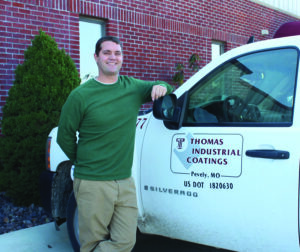
“The capabilities for collaboration of people on-site and off-site for anyone involved was very appealing,” said Derek Goff, Thomas Industrial Coatings’ Quality Systems Manager on the job. “From accounting to quality control, [TRU] is helping ensure that everyone is on the same page – sometimes literally and in real-time. With TRU, we’ve noticed improvements in General Contractor and Subcontractor correspondence, and documentation as well has improved safety documentation.”
Additionally, Thomas Industrial Coatings was intrigued by quality assurance that is better ensured through real-time monitoring capabilities by office admins, as well as cost-related documentation that is both improved and expedited.
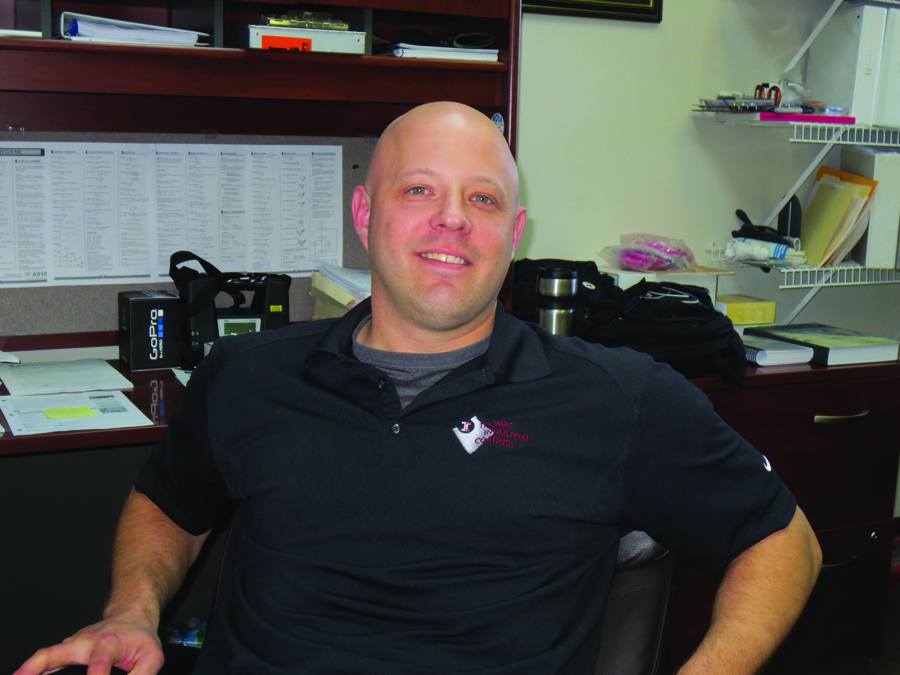
“The biggest time saver is when we have to reproduce a document,” said Todd Cook, Safety Director at Thomas Industrial Coatings. “Instead of having a foreman working miles away trying to find a fax, I can get the report right off the app and email it quickly to the right party. To me, the best thing about it is the speed.”
Chain of command and workflow
To understand the complexities of the Eads Bridge project, and to really understand the value that TRU is providing Thomas Industrial Coatings, one must first understand the chain of command on the job, as well as day-to-day work flow.
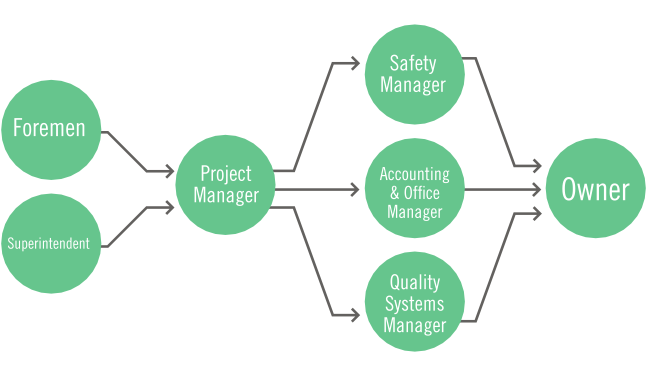
1. The foreman on the job is James Hays and the project superintendent is Matt Thomas. They’re using TRU to help manage time sheets, Toolbox Talks, Take 5s, Daily Inspection Reports and overall quality control measures on the actual job-site. They fill out reports and submit them in for review.
2. The project manager on the job, Tony Wheelock, will review submitted docs, making sure they’re complete and ready for final approval. It’s important to note that sometimes Tony is on the job-site and sometimes he’s in the job trailer. No matter where he is, thanks to TRU, he has access to the reports he needs.
3. Once Tony submits, the general manager on the job, who is in Pevely, Missouri, reviews overall progress and budget for the job. The general manager has final veto power. Once he approves, documents split and go to their respective departments.
4. Thomas Industrial Coatings’ safety manager, Todd Cook, receives the Toolbox Talk, the Take 5, the Weekly Environmental and the Incidental Report.
5. The other documents head toward Betty Wosman, the accounting manager and Dara Nausley, the office manager, who get the expense reports and the foreman’s report. Accounting data is exported to a .csv file and imported into the accounting platform of choice. Thomas uses Sage, so that’s where their reports go. There’s significant time saved in this stage.
6. Finally, the Thomas Industrial Coatings Quality Systems Manager gets the daily inspection report for final approval. This is the same report that St. Louis Bridge Construction Company needs, as they’re the overseer of the job and final approval is theirs to make. With TRU, approval is a simple touch of the screen away.
As you can see, the project chain of command and work flow has lots of opportunities for hiccup and delay. But, with TRU, it’s much easier to keep the job moving, on-time and on-budget.

“Reports actually get signed on a daily basis and are more accurate than they were before.”
— Betty Wosman, Office Manager
Return on investment
Company A reported a 390% return on investment with a paperless job-site documentation and quality control app for the Eads Bridge job.
How savings were calculated
How costs were calculated
The following figures represent TOTAL savings associated with implementing a paperless job-site documentation and quality control app across 25 active jobs for Company A. This paints a more accurate picture of the across-the-board financial effect the app has had on their business.
- Administrative time: $1376/month
(8 hours/week @$40/hr) - Accounting time: $4128/month
(24 hours/week @$40/hr) - Printing and faxing: $1000/month
- Safety director time: $2752/month
(8 hours/week @$80/hr) - Audit preparation time: $1333/month
(40 hours/year x 5 employees @$80/hr) - Field labor: $53,750/month (5 hours/week
x 25 employees @$100/hr) - Office supplies: $100/month (pens, envelopes, binders, paper clips, paper, etc.)
- Equipment savings: $3250/month (computer, camera, GPS savings)
- Approval process time: $6880/month
(admin 16 hours/week @$40/hr; GM/QSM 12 hours/week @$80/hr)
The costs of individual licenses for two foremen and one project manager were calculated across this single job. The individual license costs for one general manager, safety director, one accounting manager and one quality control manager were divided across the 25 jobs with which they’re involved.
- Individual licenses: $149 a user for the 2 foremen and the project manager ($447); the GM, safety, QC and accounting will be divided between all 25 jobs for $24; that totals out at $471
- iPads for seven team members: $70/month (assuming a 24-month hardware lifespan)
- Wireless service on the seven iPads: $68/month
Total costs for Eads Bridge job:
$609/month
Total monthly savings across Company A’s 25 active jobs: $74,569/month
Monthly savings on this Eads Bridge job alone: $2982/month
The intangible benefits of TRU
Safety documentation
In the case of an incident or workman’s comp claim, employee verificiation for non-injury, Toolbox Talk particiaption and daily hazard analysis awareness are documented. All documentation is immediately accessible from both the field and the home office without concern for mismatching data.
Peace of mind
TRU allows you to rest assured knowing all of your documentation is getting done and getting done right.
Avoidance of OSHA/AMPP fines, suspensions and/or loss of QP certification
OSHA audits and requests for pertinent safety documentation can occur anytime, announced or unannounced. AMPP audits occur at minimum once annually and can take the form of a dual audit (office and field).
Fines, suspensions or in worst cases, loss of QP certifications, can be devastating. TRU accounts for the necessary documentation to avoid these situations altogether.

“There are still a few people that do paper expense reports. And those five reports take 30 minutes to do compared to the 70 expense reports I do through TRU that take me only two hours to complete. Guys who used to never turn in expense reports are now. I am getting more thorough information. They tend to put information in right away and are not missing as many receipts since it’s so easy to use.”
— Dara Nausley, Purchasing and Logistics Coordinator
SPOT Tracker and TruQC are so excited to bring our customers TRU, a digital data management platform for heavy process industries. TRU modernizes data collection for greater accuracy, efficiency, and planning with a digital alternative to pen and paper. Our combined company is bigger, better and delivers even more digitalization solutions.
TRU is an answer to the complex documentation and compliance requirements that are too often built, serviced, and operated by multiple stakeholders with disassociated datasets. Internally building a data-capturing process often leads to inaccurate reporting, can be costly, may be hard to share among key decision makers and ultimately, may not help our customers meet required regulatory standards.
By combining our proven services, TRU’s mobile applications facilitate and automate field data collection and aggregation for construction progress, inspection, compliance, and material tracking to provide real-time visibility into operations and increase productivity of scarce labor resources. The platform also acts as a permanent, easy-to-use data management system for ongoing maintenance and compliance needs, ensuring that our customers do meet regulatory standards.
If you’re looking for a proven digital solution that empowers you to meet your compliance goals, look no further. We know businesses make better decisions based on better data. Better data starts here.
To learn more on how to get started with TRU, sign up for a free demo.
For a deeper dive, read the full press release here.

